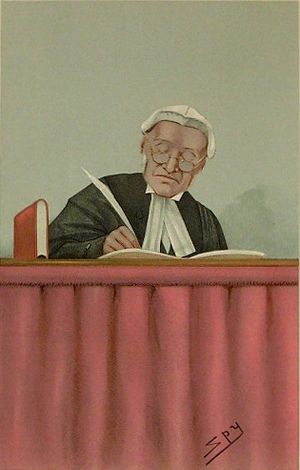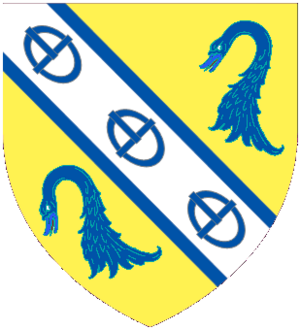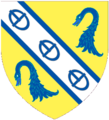James Stirling (judge) facts for kids
Quick facts for kids
Sir James Stirling
|
|
|---|---|

"Equity", Vanity Fair caricature, 1897
|
|
| Lord Justice of Appeal | |
| In office 27 October 1900 – 11 June 1906 |
|
| Preceded by | Sir Archibald Levin Smith |
| Succeeded by | Sir George Farwell |
| Justice of the High Court | |
| In office 20 May 1886 – 27 October 1900 |
|
| Preceded by | Sir John Pearson |
| Succeeded by | Sir Matthew Ingle Joyce |
| Personal details | |
| Born | Aberdeen, Scotland |
| Died | Finchcocks, Goudhurst, Kent, England |
| Nationality | British |
| Alma mater | King's College, Aberdeen Trinity College, Cambridge |
Sir James Stirling (born May 3, 1836 – died June 27, 1916) was a very smart British man. He was a lawyer, a judge, and also loved science.
When he was young, he was amazing at mathematics. He became the top math student at Cambridge University in 1860. This was seen as one of the highest academic achievements in Britain at the time.
He worked as a High Court judge from 1886 to 1900. Then, he became a Lord Justice of Appeal until he retired in 1906. Even while being a judge, he kept up his interest in science and math. After retiring, he became a vice-president of the Royal Society, a famous group for scientists.
Contents
Early Life and Education
James Stirling was born in Aberdeen, Scotland. He was the oldest son of James Stirling, a church minister. His mother was Sarah Hendry Stirling.
He went to Aberdeen Grammar School from 1846 to 1851. After that, he studied at King's College at the University of Aberdeen. He finished his degree in 1855, showing a special talent for math.
In 1856, he joined Trinity College at Cambridge University. He won important awards there, including the Sheepshanks exhibition in 1859. In 1860, he became the Senior Wrangler, which meant he was the best math student in his year. He also won the first Smith's Prize.
His Career as a Judge
James Stirling could not become a teacher at Cambridge because he was not part of the Church of England. So, he decided to become a lawyer instead. He joined Lincoln's Inn, a place where lawyers train, in 1860. He became a barrister (a type of lawyer) in 1862.
He helped report on important court cases for legal publications. In 1881, a top lawyer, Sir Henry James, chose him for a special role. This role often led to becoming a judge.
In 1886, James Stirling became a judge in the High Court. He worked in the Chancery Division, which deals with certain types of legal cases. He was also made a knight that same year, so he became "Sir James Stirling." The University of Aberdeen gave him an honorary law degree in 1887.
He was promoted to the Court of Appeal in 1900. He retired from being a judge on June 11, 1906.
As a judge, he was known for being calm and clear in his decisions. Lawyers liked him because he was fair. Some people thought he was slow, but he was very careful and thorough. His decisions were rarely changed by higher courts.
His Love for Science
Even with his busy legal career, Sir James Stirling kept his interest in science and math. In 1878, he was a member of the London Mathematical Society. A newspaper article in 1898 noted that he still studied math and science very carefully.
He became a Fellow of the Royal Society in 1902. This is a very respected group for scientists. He was even its vice-president from 1909 to 1910.
Sir James Stirling also enjoyed studying bryology, which is the study of mosses and liverworts. He was a member of the Moss Exchange Club. He had a large collection of about 6,000 different types of mosses and liverworts. After he passed away, his collection was given to the Tunbridge Wells Museum.
Family Life
Sir James Stirling married Elizabeth Renton on May 12, 1868. She was from a Scottish family. They had three children: James Irvine, Agnes Renton, and John Gordon.
The family lived in Kensington and later Ladbroke Grove in London. By 1891, they were living in Shalford. From 1890, they also leased Finchcocks, a large old house in Goudhurst, Kent. Sir James Stirling spent most of his time there after he retired. He passed away at Finchcocks on June 27, 1916.
Images for kids




